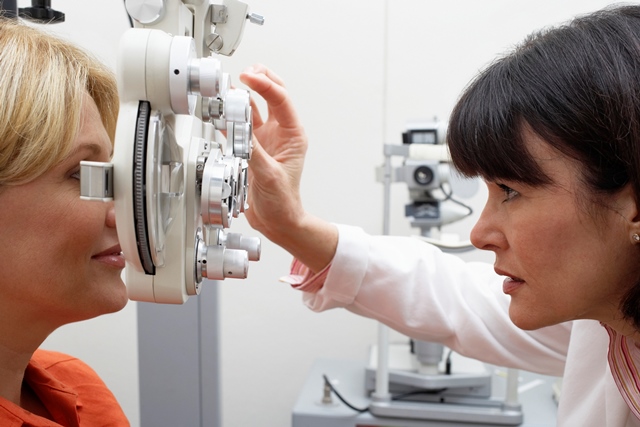Many eye conditions, such as cataracts, get wide attention in the media. One lesser known eye problem is Keratoconus, a bothersome and progressive malady which affects the clear covering of pupil, colored iris and front chamber of the eye. Known as the cornea, this important structure allows light to pass into the eye to be focused on the retina. The retina sends visual information to the brain for processing.
What is Keratoconus?
Normally, the cornea is round or dome-shaped. In some individuals, however, this shape changes to be more cone-like, hence the term Keratoconus. The more elongated shape causes what people see to be distorted in various ways such as:
- Blurring of images, especially at night, with lights appearing as though they have halos around them or to have a streaking affect
- Double vision or ghosted images
- Astigmatism or blurry vision
- Severe nearsightedness
- Increased sensitivity to bright light
While Keratoconus does not really change eye health, it does change how well a person sees in one or both eyes. Many patients find they require several changes in their lens prescriptions.
Usually, Keratoconus affects young people in their teens to around age 30. It is less frequent in individuals over 40. In addition, this eye condition can come on suddenly. In other words, a person with no previous vision problems can quickly begin experiencing the halos, double images or other symptoms of Keratoconus.
The causes of Keratoconus include a hereditary tendency toward the condition. Researchers also say that circulation of free radicals (atoms that are missing electrons) may be causative, as well as irritation from contact lenses or allergens. Any or all of these factors may weaken the cornea and bulge it into a cone-like shape.
How to Treat Keratoconus?
While some eye doctors may be able to recognize and treat Keratoconus, corneal specialists or cataract doctors Houston are the most skilled in dealing with it. He or she diagnoses the problem with a routine eye exam combined with a dilated slit lamp exam to visualize the entire structure of the eye. Keratometry measures how light passes through the cornea, and computerized cornea mapping tells the doctor how thick the cornea measures.
To treat Keratoconus, the doctor may first try prescribing corrective eye glasses. Soft contact lenses may prove helpful, too.
When neither prescription lenses or soft contacts achieve the desired results, the Houston cataract surgeon may use gas-permeable or hard contact lenses to give the cornea a more round, stable and smooth surface. An opthamologist may try combinations of soft and hard lenses in a technique called piggybacking to get the correct fit. Other options include hybrid and scleral lenses which set on different areas of the eye for better comfort and image correction.
With advanced Keratoconus, a corneal specialist may perform a corneal transplant or keratoplasty. For decades, these surgeries involved replacement of the entire corneal. Nowadays, surgeons have the option of transplanting only a thin layer of the cornea or of inserting small supports into the cornea to improve its shape.
It is important for anyone experiencing visual changes to see his primary care physician right away. Keratoconus is just one of many conditions in the complicated structure of the eye which can adversely affect vision.
If you are suffering from symptoms of Keratoconus or are experiencing any other eye issues, contact Dr. John Goosey’s office today!





